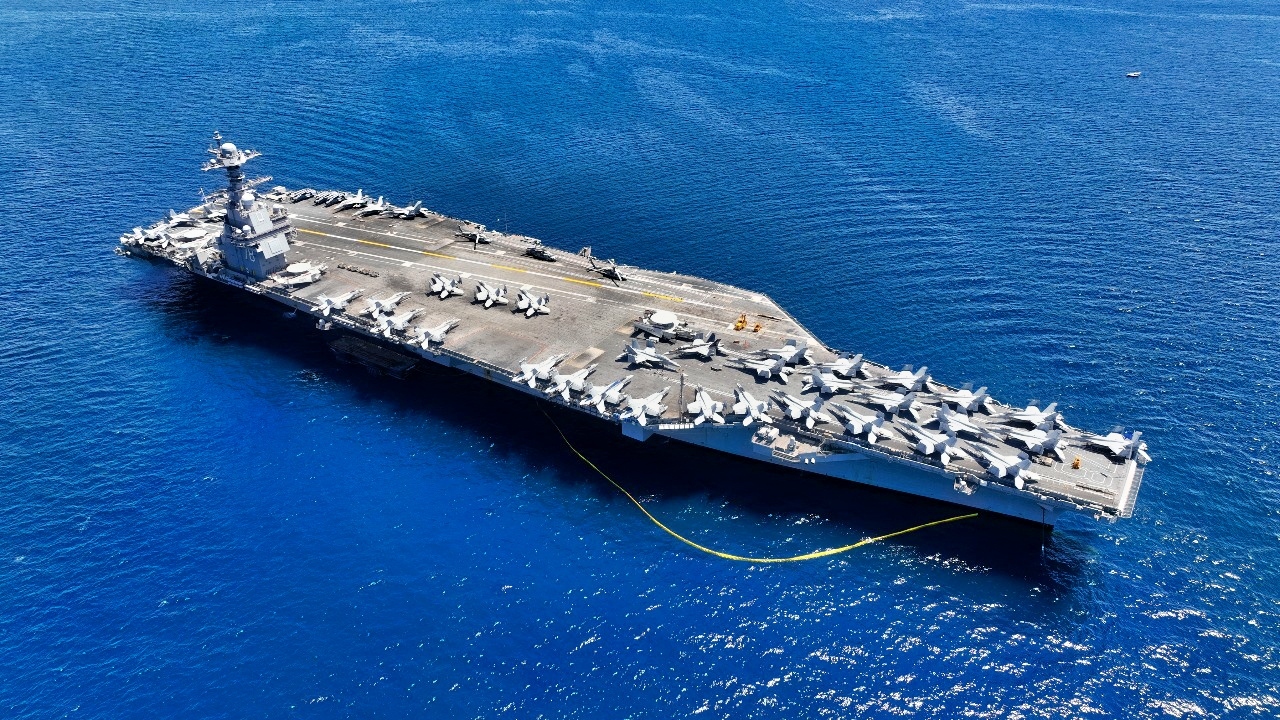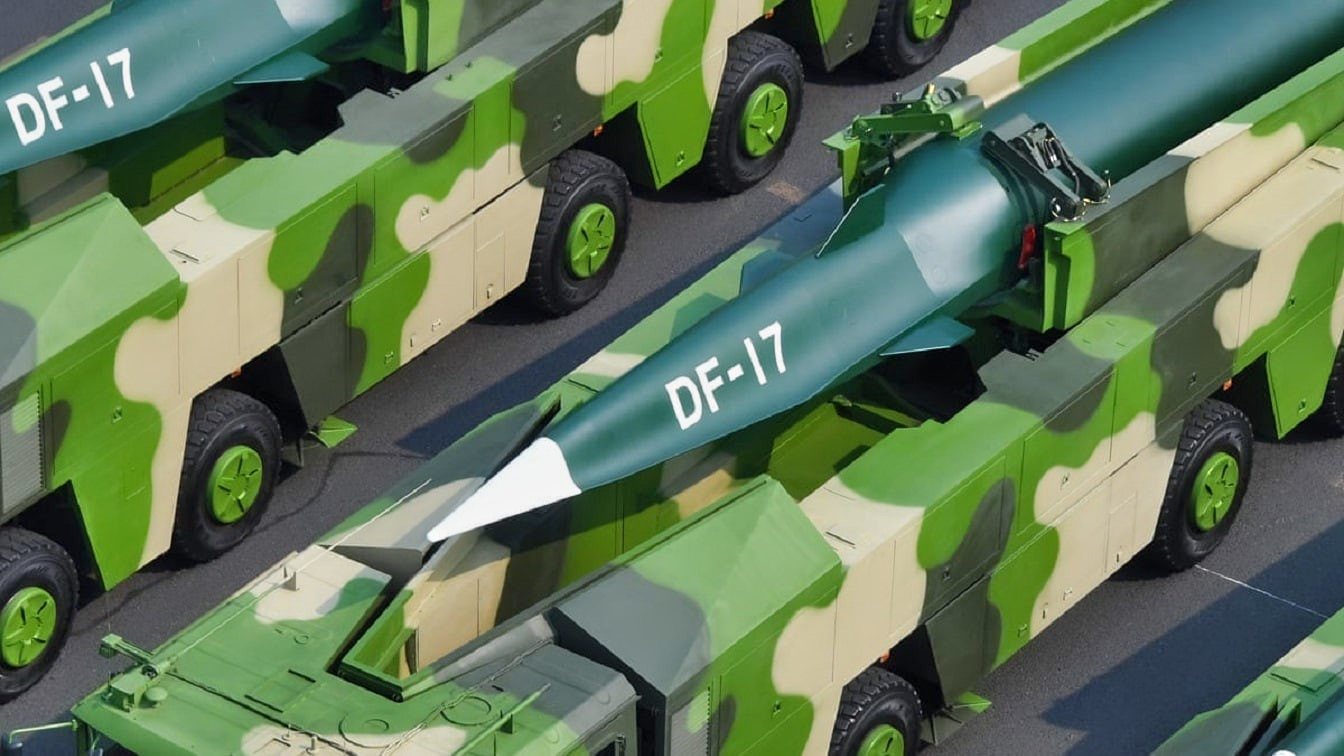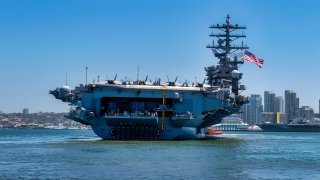Adapt or Sink: Can U.S. Aircraft Carriers Survive in a Conflict with China or Russia?
The U.S. Navy has long relied on aircraft carriers as the centerpiece of its naval power, but in today's multipolar world, this strategy may be outdated. Rivals like China and Russia have developed advanced anti-access/area-denial (A2/AD) systems, including hypersonic weapons, designed to neutralize American carriers.
What You Need to Know: The U.S. Navy has long relied on aircraft carriers as the centerpiece of its naval power, but in today's multipolar world, this strategy may be outdated. Rivals like China and Russia have developed advanced anti-access/area-denial (A2/AD) systems, including hypersonic weapons, designed to neutralize American carriers.

As tensions rise, the predictability of U.S. naval deployments could be a significant weakness. Washington’s continued reliance on aircraft carriers, despite modern countermeasures, calls for a strategic rethink.
The U.S. must adapt its naval approach to remain competitive and unpredictable against emerging global threats.
The United States has made the aircraft carrier the centerpiece of its naval strategy since the Second World War. For most of that time, this was a wise move by Washington. Few nations—even the old Soviet Union—could match America’s capabilities in aircraft carriers. Today, however, the world is increasingly hostile to the United States.
What’s more, unlike the Cold War era, where there was one major challenger to American primacy and security, there are today at least two major great states challenging America’s dominance and multiple other medium-sized states, such as Iran or North Korea, seeking to undermine the American position. That’s to say nothing of the various non-state actors that have been threatening American security since the 9/11 attacks.
America Needs to Rethink Its Naval War Strategy
What is needed today is a total rethink of the way that America fights—and wins—its wars. Because, since the end of the Cold War, the United States has not adapted very well to the environment. The way that it procures weapons and equipment and plans for wars is simply outmoded. Very often, political considerations and the desires of well-funded defense contractors seeking to enhance their bottom line (at the taxpayer’s expense) define the mission as opposed to the actual mission and understanding of the threat defining the weapon or the strategy.
Hence, America’s obsession with expensive and cumbersome aircraft carriers. The United States has not only committed to this weapons platform, but it has become a cultural symbol. That is why the cult of flat tops has taken hold to such a degree that to even point out that great state rivals, such as China and Russia, as well as the proxies for these nations, such as Iran or North Korea, have developed highly effective countermeasures is considered unpatriotic or worse, heretical. But this fixation on the carrier as more than just a weapons platform, as a cultural icon, is precisely what makes it such a terrible weapon to rely upon.

America’s enemies, whether it be China—especially China—or Russia, or even their proxies, know exactly how the Americans will respond to their irredentism. It will involve the deployment of aircraft carriers. The one thing a military does not want to be in any conflict is predictable. This is especially true if rivals have built entire arsenals of weapons and tracking equipment specifically designed to stunt the potency—or to even destroy—the weapon system, such as an aircraft carrier, that everyone knows your side will deploy at the start of any engagement.
The US Navy is Being Too Predictable
But the US has so heavily invested in the aircraft carrier as the centerpiece of their naval strategy, and the great power conflict we all fear seems to be closer than it has been in decades, meaning that the US is married to the flat top as its primary power projection weapon at sea.
Thus, Washington’s current war plans play right into China’s and Russia’s anti-access/area-denial (A2/AD) strategies. If actual war erupts between the United States or any of its major rivals, these forces will do what they must to win the war—and that means going-for-broke and trying to sink US carriers before they can become a serious threat to their forces and interests.
One way or another, thanks to the advent of hypersonic weapons and anti-ship missiles, such as China’s DF-21 series, American aircraft carriers will not be as effective against targets defended by these A2/AD systems.

China, Russia, Iran, and probably North Korea all have developed such countermeasures to one degree or another. America is speeding toward a reckoning at sea the likes of which it hasn’t experienced since the Second World War.
Author Experience and Expertise: Brandon J. Weichert
Brandon J. Weichert, a National Interest national security analyst, is a former Congressional staffer and geopolitical analyst who is a contributor at The Washington Times, the Asia Times, and The-Pipeline. He is the author of Winning Space: How America Remains a Superpower, Biohacked: China’s Race to Control Life, and The Shadow War: Iran’s Quest for Supremacy. His next book, A Disaster of Our Own Making: How the West Lost Ukraine, is due October 22 from Encounter Books. Weichert can be followed via Twitter @WeTheBrandon.
All images are Creative Commons or Shutterstock.
From the Vault
Russia Freaked Out: Why the U.S. Navy 'Unretired' the Iowa-Class Battleships
Battleship vs. Battlecruiser: Iowa-Class vs. Russia's Kirov-Class (Who Wins?)
Image Credit: Creative Commons and/or Shutterstock.


